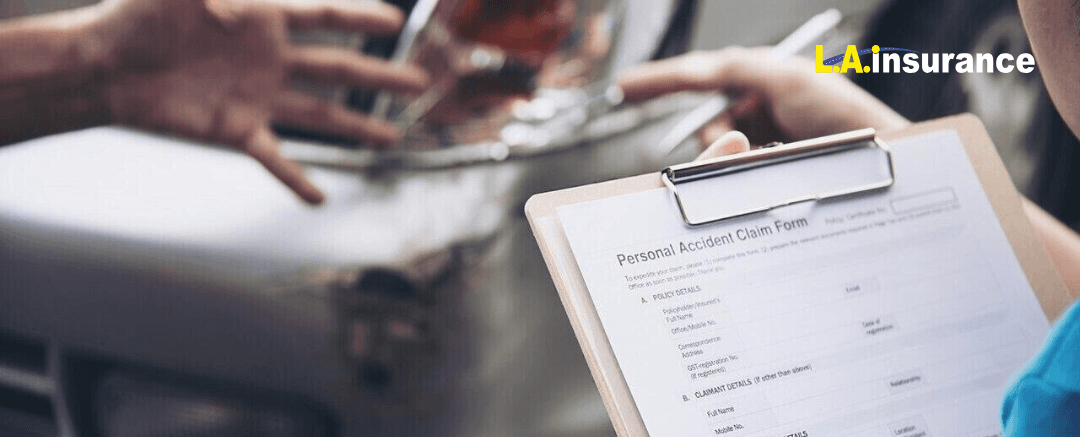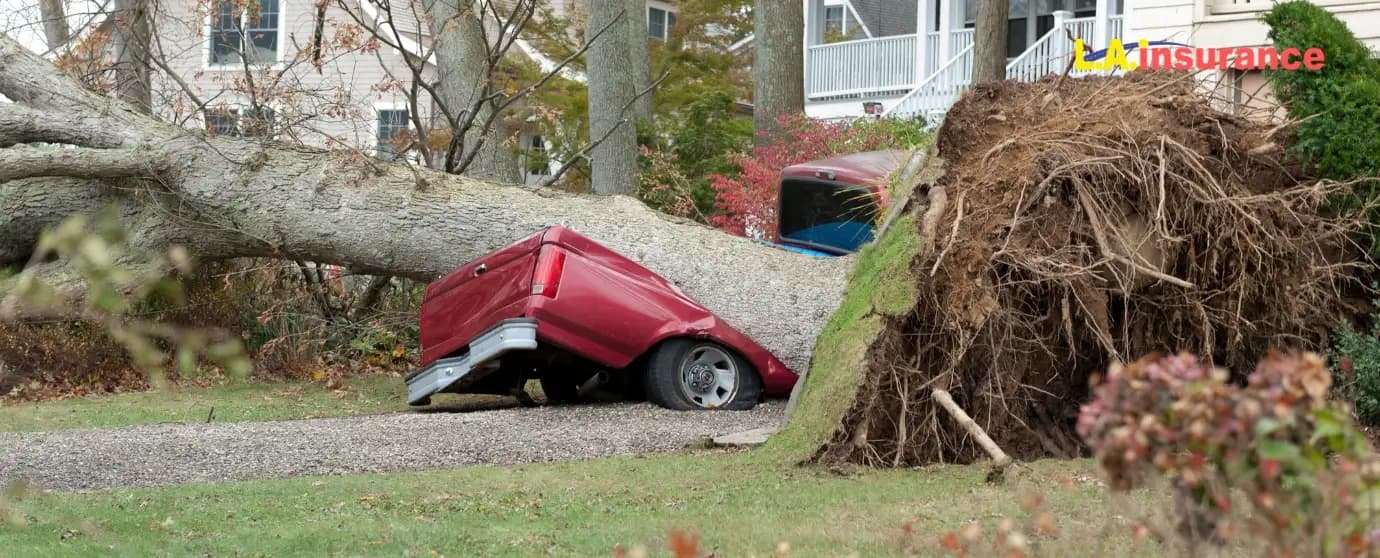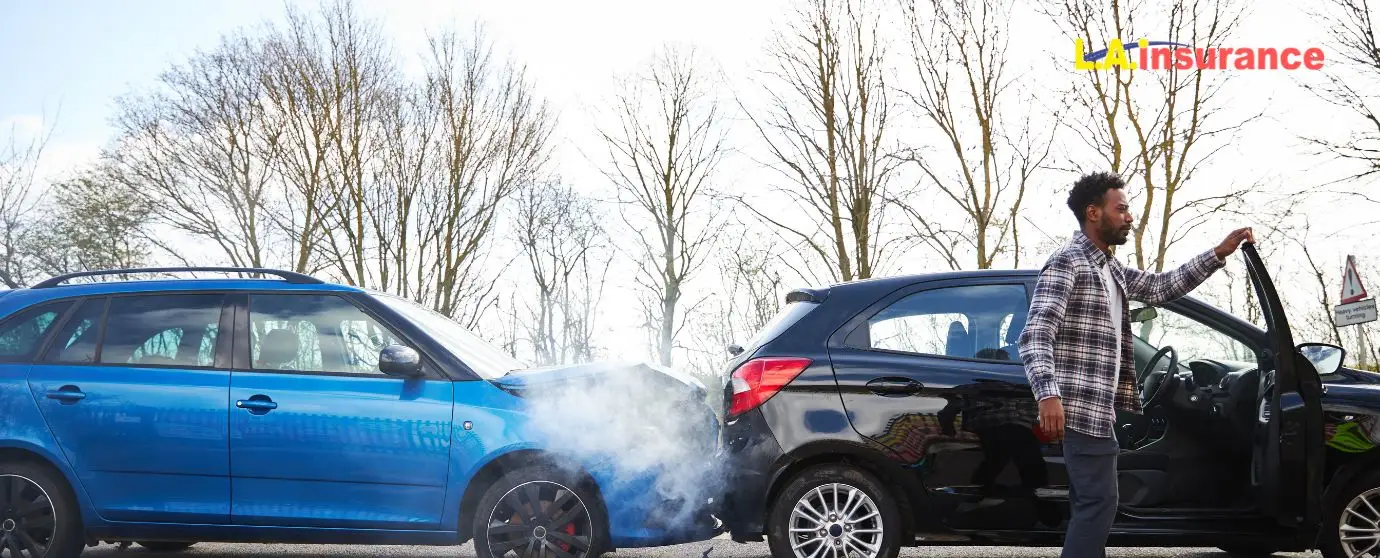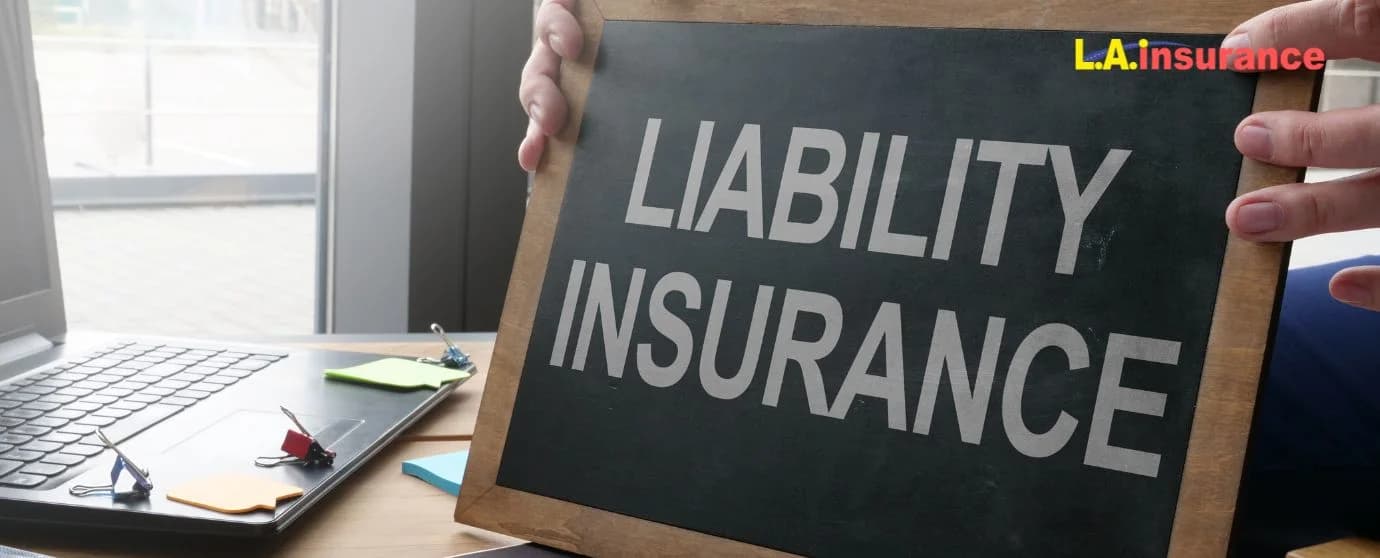
Publish Date: 06-09-2025
Auto Insurance
How to File a Claim After a Car Accident
No one plans for a car accident. It happens suddenly. And when it happens, you’re left dazed, confused, and asking one urgent question: “How do I file a claim after a car accident?”
That moment is more than just a fender bender or a broken taillight. It’s stress. It’s shock. It’s wondering who pays for the damage and how soon you’ll be back on the road.
Whether you’re dealing with property damage, personal injury, or both, filing a car insurance claim after an accident can make you feel unsettled. Especially if it’s the first time.
In a situation like this, a lot of questions might linger on your mind:
- Do you contact your insurer first?
- What if it wasn’t your fault?
- What if the other driver doesn’t have car insurance?
But no worries. In this guide, we’ll walk you through how to file a car insurance claim, step-by-step, whether it’s with your own auto insurance provider or against someone else’s policy. We’ll help you understand how to report an accident, what information you need, how deductibles work, and what happens if your car is declared a total loss.
Immediate Steps to Take at the Scene of the Accident
If an accident happens, filing an auto insurance claim shouldn’t be your first concern. You can have your car repaired or receive reimbursement from your insurance company. But life doesn’t always give second chances. That’s why safety should take priority. Here’s what a responsible driver is expected to do after a car accident:
1. Put Safety First
Move to a safe place, if possible. Turn on hazard lights. Check yourself and others for injuries. If anyone is hurt, call 911 right away. Don’t try to move injured persons unless necessary.
2. Call the Police and Report the Accident
Always request a police report, even for minor crashes. The officer’s statement helps document fault, legal liability, and supports your auto insurance claim. Ask for the officer’s name, badge number, and report number.
More>> Can You Claim Car Accident Without Police Report?
3. Exchange Insurance and Driver Information
Swap insurance information with the other driver. Get names, phone numbers, policy numbers, and license plate details. These details are essential for your vehicle insurance provider to verify legal liability and process the claim.
More>> How to Find If Someone Has Auto Insurance?
4. Document the Scene
Take photos of all vehicles, property damage, skid marks, street signs, and road conditions. If you’re injured, document visible personal injury as well. This visual proof will support your accident claim if disputes arise.
5. Talk to Witnesses (If Any)
Ask for their names and phone numbers. They can back up your version of events if the claims process gets complicated. Your insurance company may contact them during the investigation.
6. Don’t Admit Fault or Apologize
Stay calm. Stick to facts. Avoid admitting fault or saying sorry, even if you think you caused the accident. Let the auto insurance adjusters and law enforcement decide what happened.
7. Call for Roadside Assistance If Needed
If your vehicle isn’t drivable, request towing through your auto insurance policy or roadside help provider. Ask the tow company where your car is being taken. This helps with your accident claim and repair process later.
More>> Does Full Coverage Car Insurance Cover Towing?
8. Notify Your Insurance Company
Call your insurance company as soon as you're safe. Let them know there’s been an accident and you're planning to file a car insurance claim. Use their mobile app or website if available. It can speed up the process. If you’re a valued policyholder of L.A. Insurance agency, you can directly file a claim online through our website.
Learn More>> What to do After a Car Accident in Michigan?
7 Easy Steps to File an Auto Insurance Claim After an Accident
Filing a car insurance claim after an accident shouldn't be as traumatic as the accident itself. It’s a super-easy process. After the accident, try to stay calm and then follow this step-by-step guide to file your auto insurance claim. Whether you’re a policyholder in Michigan, Colorado, Texas, Nevada, or any other state, these steps apply across most auto insurance policies.
Step 1: Contact Your Insurance Company Immediately
As soon as you’re safe, call your auto insurance provider. You can use their mobile app, customer portal, or agent contact number to start the accident claim.
Mention the accident, location, and whether there were injuries or property damage. Keep in mind that delaying could impact how smoothly your insurance claim gets processed. And there’s also a time limit for filing a car accident claim.
In fact, each state has its own statute of limitations for how long you have to report a car accident to your insurer. According to Bankrate, the standard timeframe in most states is 10 days, though some jurisdictions, such as New York, may require notification within just one day.
In Michigan, you have one year to file a no-fault insurance claim for benefits such as medical expenses and lost wages. If you're seeking financial compensation for pain and suffering from the at-fault driver, the deadline extends to three years (Via Michigan Auto Law).
Step 2: Share All the Required Information
Be prepared to provide details like date, time, and exact location of the car accident. You’ll also need contact info, insurance information, and vehicle details for all involved parties.
Include police report details if available. Besides, submit the photos or videos of vehicle damage or personal injury. It works as evidence to support your claim. And thus, it speeds up the claim review process.
Step 3: Review Your Auto Insurance Policy
Before moving forward, know what your auto insurance policy actually covers. You should check your deductible amounts and whether you have collision, PIP, or rental reimbursement.
Let’s say you have set $500 deductible for collision coverage. This means you’ve agreed to pay $500 upfront anytime you file a claim against collision insurance coverage. In this case, if the car crash results in only $400 property damage, filing a claim is a bad idea and a waste of time.
Even if the crash causes $600 in damages, you’ll only receive $100 in compensation after paying the deductible. This also isn’t a smart move. Because insurers usually keep a record of each claim, which is often called a claim history. And your car insurance rate could go up around 42% after a car accident claim. If the payout is insignificant, minus your deductible, you shouldn’t move forward.
More>> Can You Cancel an Auto Insurance Claim After Filing it?
Step 4: Get a Claim Number and Adjuster Assigned
Once your insurance claim is logged, you’ll get a claim number. Keep it saved. You can use it to see the claim progress, submit additional documents, and receive payments. Your insurer also uses it to track your case.
Besides, you’ll be assigned a claims adjuster as soon as your claim has been filed. The adjuster will investigate the accident, assess legal liability, and review damages.
Step 5: Schedule a Damage Inspection
Your insurer may schedule an in-person inspection or offer a virtual estimate via mobile app or online customer portal. Use it to upload photos of your vehicle or schedule a visit to an approved repair shop. This step also helps determine whether your car is repairable or a total loss.
Step 6: Approve Repairs or Settle for Total Loss
If repairs are approved, you can choose any body shop. Some insurers also offer in-network options with perks like direct payment and warranties.
Unfortunately, if your vehicle is totaled after an accident, your insurer may pay you its market value (Actual Cash Value) minus your deductible. However, to receive that amount, you will need to have the required full coverage auto insurance (e.g., collision, comprehensive).
In a total loss situation, you’ll accept the payout and transfer the ownership to your insurer. And they will salvage the car. However, if the car is financed or leased, the insurer will pay the lender, and if there’s any remaining auto loan, you’ll need to pay it out of pocket. However, you can benefit from gap insurance if you don’t want to pay the outstanding loan in a total loss scenario.
Step 7: Track Your Claim and Follow Up
Use your insurer’s mobile app or portal to check updates, upload documents, and message your claim adjuster. If anything is missing, don’t wait. Quick communication can help avoid delays, particularly with personal injury protection (PIP), medical bills, or legal liability concerns.
How to File a Claim Against Someone Else's Car Insurance?
If someone else caused the car accident, you may not want your auto insurance to foot the bill. That’s when you file a third-party insurance claim directly with the at-fault driver’s provider. But it’s not always easy. You need proof, patience, and the right information.
To file a claim against someone else’s car insurance, first, you need to collect the at-fault driver’s full information, including the full name, policy number, vehicle info, and insurance information before leaving the scene.
Take photos of the property damage, your vehicle, and any personal injury. Get a copy of the police report and the names of any witnesses. Now, call the at-fault driver’s insurance provider and provide documentation and request a claim number and adjuster contact.
Their insurer will review the accident, assess fault, and determine legal liability. If they accept the claim, they will cover repairs, medical bills, or any other harm that happened to you and your vehicle. In this case, you don’t have to pay the deductible.
However, unfortunately, if they deny responsibility, you can contact your insurer. They may pay you first, then recover the money later. And the same goes for a hit-and-run case. You should let your insurance company know about the incident. And they will try to do everything on your behalf to get you the compensation.
When Not to File an Auto Insurance Claim After an Accident?
Filing a claim isn’t always the best move. In some cases, it’s smarter and even cheaper to pay out of pocket. Skip the claim if:
- Damage is minor and below your deductible.
- You caused a one-car accident, and no one else was involved
- The repair cost is less than or close to your deductible
- You’ve filed recent claims and risk a premium increase
- The other driver agrees to pay for the property damage directly
- You want to keep a clean record with your auto insurance provider
If unsure, call your insurance agent before filing. They can explain how your auto insurance policy might be affected. If you’re insured with L.A. Insurance, call us at (800) 893-9393 for any claim-related queries.
Tips for Filing an Insurance Claim After a Car Crash
Here are key tips for filing a successful car accident claim (and mistakes to avoid while you’re at it):
- Notify the insurance company ASAP
- Never admit fault at the scene
- Always file a police report even for minor crashes
- Don’t skip documenting damages (e.g., taking photos, videos, notes)
- Know your policy details (e.g., coverage policy, deductible)
- Avoid delays in medical care
- Save every piece of paperwork (e.g., Bills, emails, repair quotes)
- Be honest but not chatty, cause oversharing or guessing can hurt your case
- Don’t settle too quickly, as many insurers may offer lowball payouts
- Stay in touch with your claim adjuster
FAQs About Filing a Car Insurance Claim After an Accident
What information do you need to file a car accident claim?
You’ll need: names, contact info, insurance information, vehicle details (e.g., license plate, who was driving), location, photos of property damage, witness contacts (if any), and the police report number. This information helps your insurer determine fault, verify coverage, and speed up the claim process.
What is the best way to file an auto insurance claim?
Use your insurer’s mobile app, online portal, or call your agent. Apps often allow you to upload photos, check claim status, and contact your insurance adjuster fast. Choose the method that gets you a claim number quickly and start the auto insurance claim process right away.
How to use a mobile app to file and track your claim?
Most insurers offer a mobile app to file your auto insurance claim fast. You can upload photos, submit documents, receive your claim number, message your insurance adjuster, and track status updates in real-time. To log in using the app or portal, use your policy number and full name, or date of birth.
What if the other driver is uninsured or underinsured?
If the at-fault driver has no vehicle insurance or too little coverage, your uninsured/underinsured motorists policy may kick in. It can cover your property damage, medical bills, and even personal injury costs. Without this coverage, you might pay out of pocket or need to file a lawsuit.
Will my rates go up if I file a claim?
Yes. In many cases, your auto insurance premium will increase, especially if you’re at fault or file multiple claims. Even not-at-fault driver claims can raise rates depending on your insurance company and policy.
How to handle a total loss claim?
If your vehicle is declared a total loss after an accident, your insurance company will pay its actual cash value, minus your deductible. But for that, you have to have the required coverage, depending on the cause of the accident. If you don’t have collision coverage, you might not be covered for an accident where you’re at fault. If the collision happens with animals (e.g., deer), you’ll need to have comprehensive coverage to receive compensation. Now, if you have the required coverage in a total loss situation, submit all documents, including the title, loan details (if any), and damage photos. If you disagree with the payout amount, you can negotiate using market value evidence.
How does insurance work when it's not your fault?
You can file a third-party claim with the at-fault driver’s insurer. If they accept liability, they will cover your damages. If they deny it, your own car insurance provider may compensate first and attempt to recover costs later. If the other party is 100% at fault, you won’t owe a deductible.
How to file an auto insurance claim when you’re at fault?
Call your insurance company, report the accident, and explain what happened clearly. Provide all necessary information and cooperate with the claims adjuster.
How long do you have to file a claim after a car accident?
Time limits vary by state and auto insurance policy. Some allow days, others weeks.
How long does a car accident settlement take?
Auto accident claim settlements can take a few weeks to several months. It depends on the severity of damage, injury, and how quickly insurance companies agree on fault and payment.
When is it too late to file a car insurance claim?
It’s too late if your policy’s claim window has passed or if state law bars late claims. Keep in mind that delayed filing can lead to denied insurance claims.
Do I need a lawyer for a car accident insurance claim?
You may need a lawyer if you’re seriously injured, the other driver disputes fault, or your claim is denied or underpaid. Also, consider legal help if you’re facing a lawsuit or negotiating a complex personal injury settlement. For simple property damage, most claims don’t require one.
Tag :
Auto insurance








